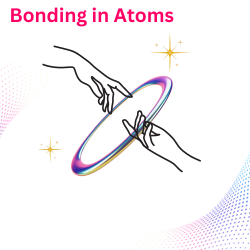
Atoms primarily form three types of bonds – ionic, covalent, and metallic.
We start by exploring the Octet Rule that determines Ionic and Covalent bonds.
The succeeding chapters cover ionic bonds and ionic compound formation and compare their strength using lattice energy.
In Organic chemistry, Covalent Bonds are identified with long chains of Carbon, Hydrogen atoms, and a few other heteroatoms like Oxygen, Nitrogen, and Halogen. Therefore, understanding how covalent bonds form, why they form, the electrons involved in them, the number of covalent bonds an atom can form, and the types of covalent bonds becomes crucial.
Finally, we also cover Metallic Bonding, which is responsible for displaying a vast array of features like strength, shine, malleability, ductility, and electric conductance. The chapter covers the nature, significance, and application of metallic bonding, ending with the difference between metallic and ionic bonding.
Chapter - Bonding in Atoms
- Octet Rule- Introduction and Bonding
- Limitations of Octet Rule
- Ionic Bond- Introduction and Formation
- Formation of Ionic Compound
- Requirements for Ionic Bonding
- Appearance and Nature of Ionic Compounds
- Physical Properties of Ionic Solids- Conductance, Solubility, Melting Point, and Boiling Point
- Covalent Bond - How it Forms
- Covalent Bond - Why it Forms?
- Covalent Bond- Bond Pair (Single, Double, Triple) and Lone Pair
- Number of Covalent Bonds- Valency
- Types of Covalent Bonds- Polar and Nonpolar
- Metallic Bonds- Introduction and Nature
- Significance of Metallic Bonding
- Impact of Metallic Bonding on the Physical Properties
- Applications of Metallic Bonding
- Difference Between Metallic and Ionic Bond